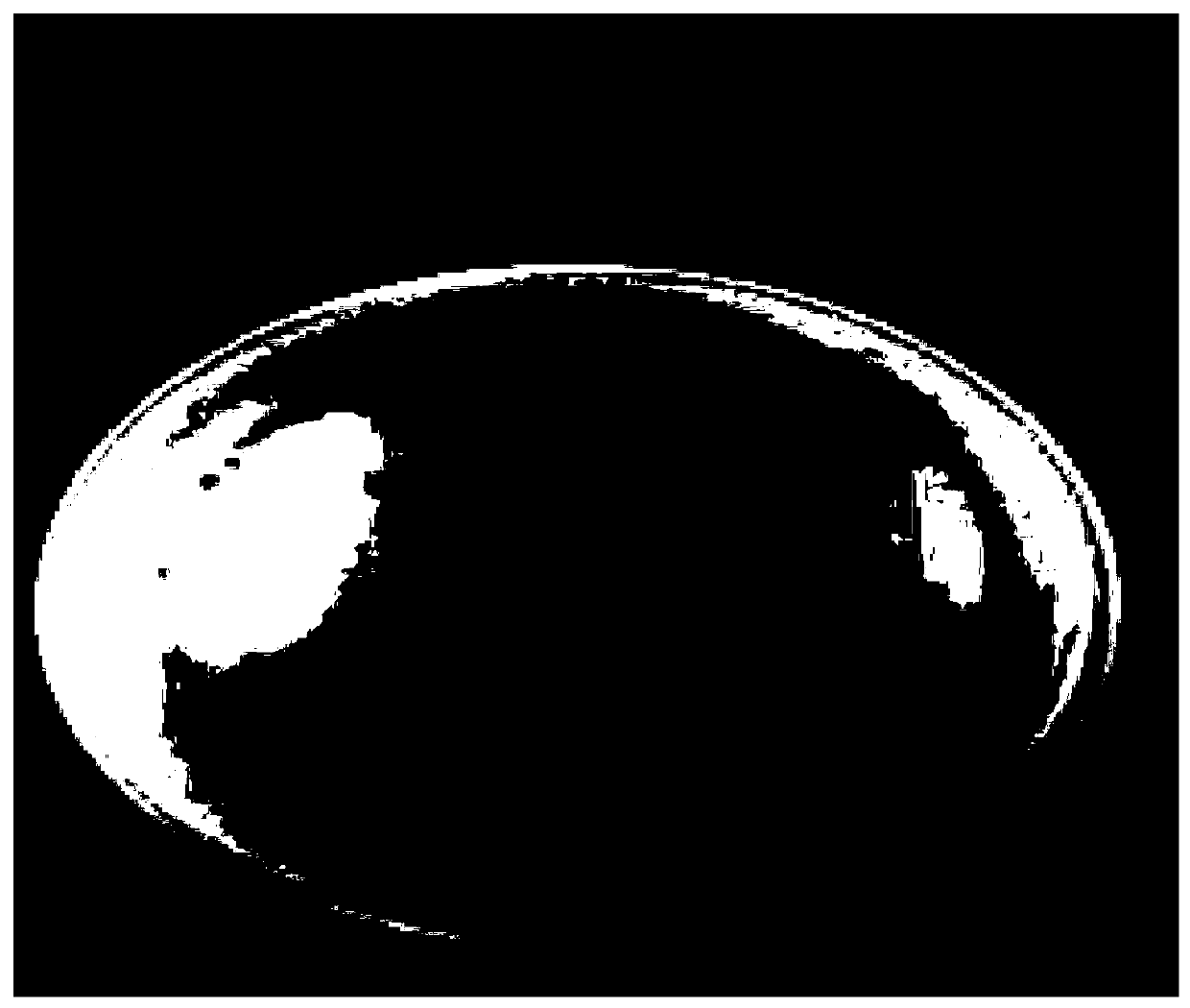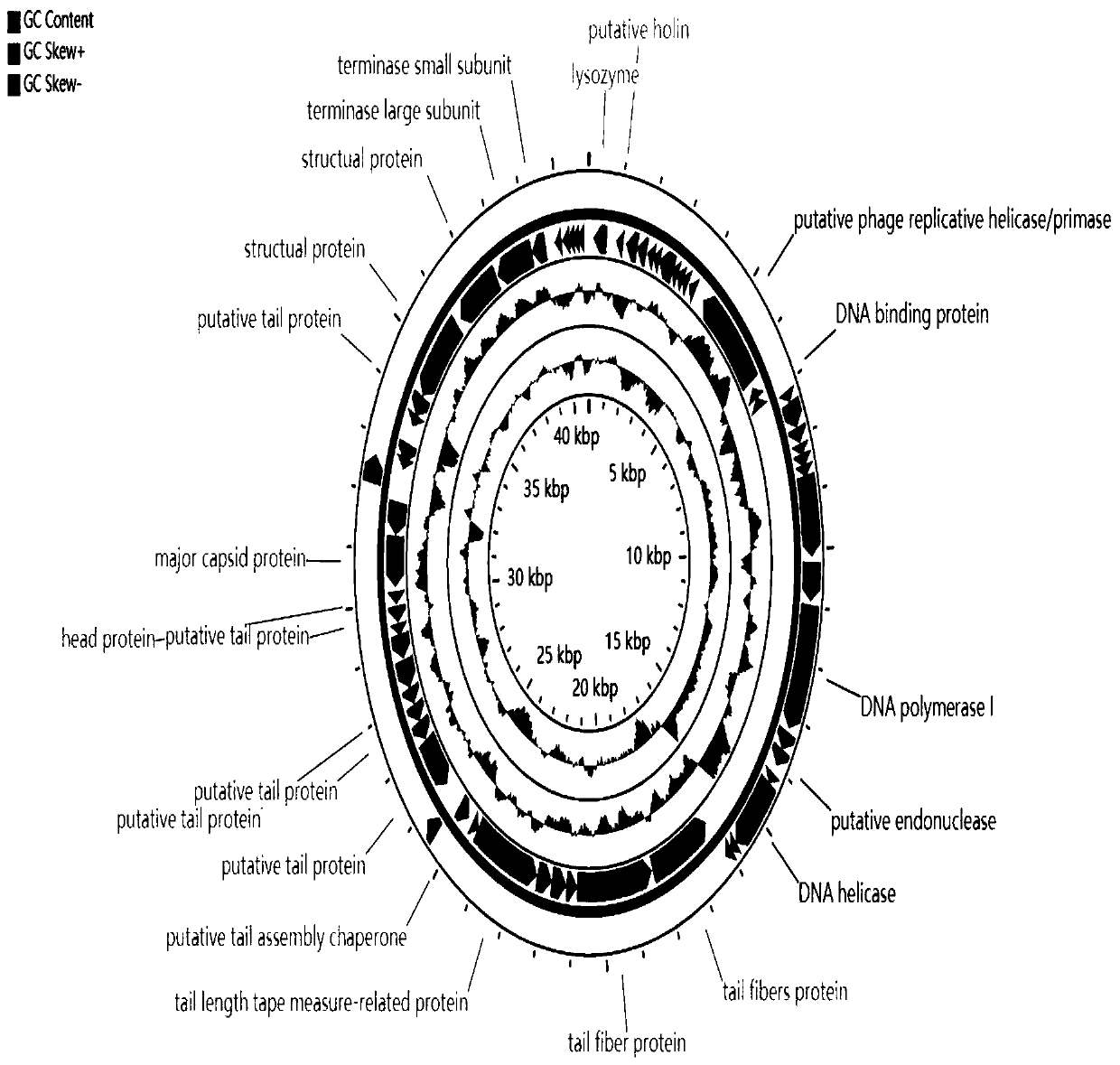Salmonella phage SEE-1 and application thereof
A technology of SEE-1, Salmonella, applied in the field of bioengineering, to achieve the effect of expanding the host spectrum, fast and efficient lysis effect
- Summary
- Abstract
- Description
- Claims
- Application Information
AI Technical Summary
Problems solved by technology
Method used
Image
Examples
Embodiment 1
[0020] Isolation and purification of phage
[0021] The sewage sample used in the test of the present invention was collected in April 2018 in the aeration tank of a certain urban sewage treatment plant in Beijing as a water sample for separating bacteriophage.
[0022] Take 200mL water sample, centrifuge at 4,000g for 20min to remove large impurities, and then filter the supernatant through a 0.22μm filter membrane to remove bacteria to obtain filtrate A. Take 100mL of filtrate A, 100mL of 2×LB medium and 10mL of Salmonella enteritidis bacteria liquid, mix them at 37°C and 160rpm for 10h, then centrifuge at 6000g for 10min at 4°C, take the supernatant after centrifugation, and centrifuge again to obtain filtrate B. Filtrate B is the phage intended to contain the corresponding host bacteria. Use the double-layer plate method to detect whether there are phages in the filtrate B. Take 0.1 mL of the filtrate B after appropriate dilution and add 0.1 mL of Salmonella Enteritidis ba...
Embodiment 2
[0025] Phage Morphological Observation
[0026] Take 20 μL of the phage suspension and drop it on the copper grid, wait for its natural precipitation for 10 minutes, blot it dry from the side with dry filter paper, let it air for about 1 minute, add 1 drop of 1% uranyl acetate on the copper grid, stain for 2 minutes, and then use it carefully to dry Blot the excess dye from the side of the filter paper, let it dry naturally in the dark for 30 minutes, and observe it with a transmission electron microscope (JEM-1400).
[0027] Transmission electron microscopy results show (see figure 2 ), phage SEE-1 has an icosahedral head and a long tail, the diameter of the head is about 57.5nm, and the length of the tail is about 113.5nm. According to the ninth report of the International Taxonomy of Viruses (ICTV) virus classification, the Strain phage SEE-1 was classified into the long-tailed bacteriophage family.
Embodiment 3
[0029] Phage genome analysis and identification
[0030] Phage whole genome sequencing and analysis: The DNA of the sample was sequenced using IlluminaNextSeq500 sequencing technology. Then, the optimized sequence was spliced using spades 3.0 splicing software, and the optimal assembly result was obtained. Use the biological software PHASTER to predict and analyze the open reading frame of the genome, and use NCBI Blastp to complete the preliminary annotation of functional genes, and use tRNAscan-SE (http: / / lowelab.ucsc.edu / / tRNAscan-SE / ) to predict tRNA online, Use CGView Server software (http: / / stothard.afns.ualberta.ca / cgview_server / index.html) to complete the drawing of the whole genome circle map, and use the MEGA X software to build a phylogenetic tree based on the whole genome data.
[0031] Whole-genome analysis showed that the genome of phage SEE-1 was a circular double-stranded structure with a full length of 40987 bp. There were 63 predicted Open Reading Frames (...
PUM
| Property | Measurement | Unit |
|---|---|---|
| diameter | aaaaa | aaaaa |
Abstract
Description
Claims
Application Information
 Login to View More
Login to View More - R&D
- Intellectual Property
- Life Sciences
- Materials
- Tech Scout
- Unparalleled Data Quality
- Higher Quality Content
- 60% Fewer Hallucinations
Browse by: Latest US Patents, China's latest patents, Technical Efficacy Thesaurus, Application Domain, Technology Topic, Popular Technical Reports.
© 2025 PatSnap. All rights reserved.Legal|Privacy policy|Modern Slavery Act Transparency Statement|Sitemap|About US| Contact US: help@patsnap.com



